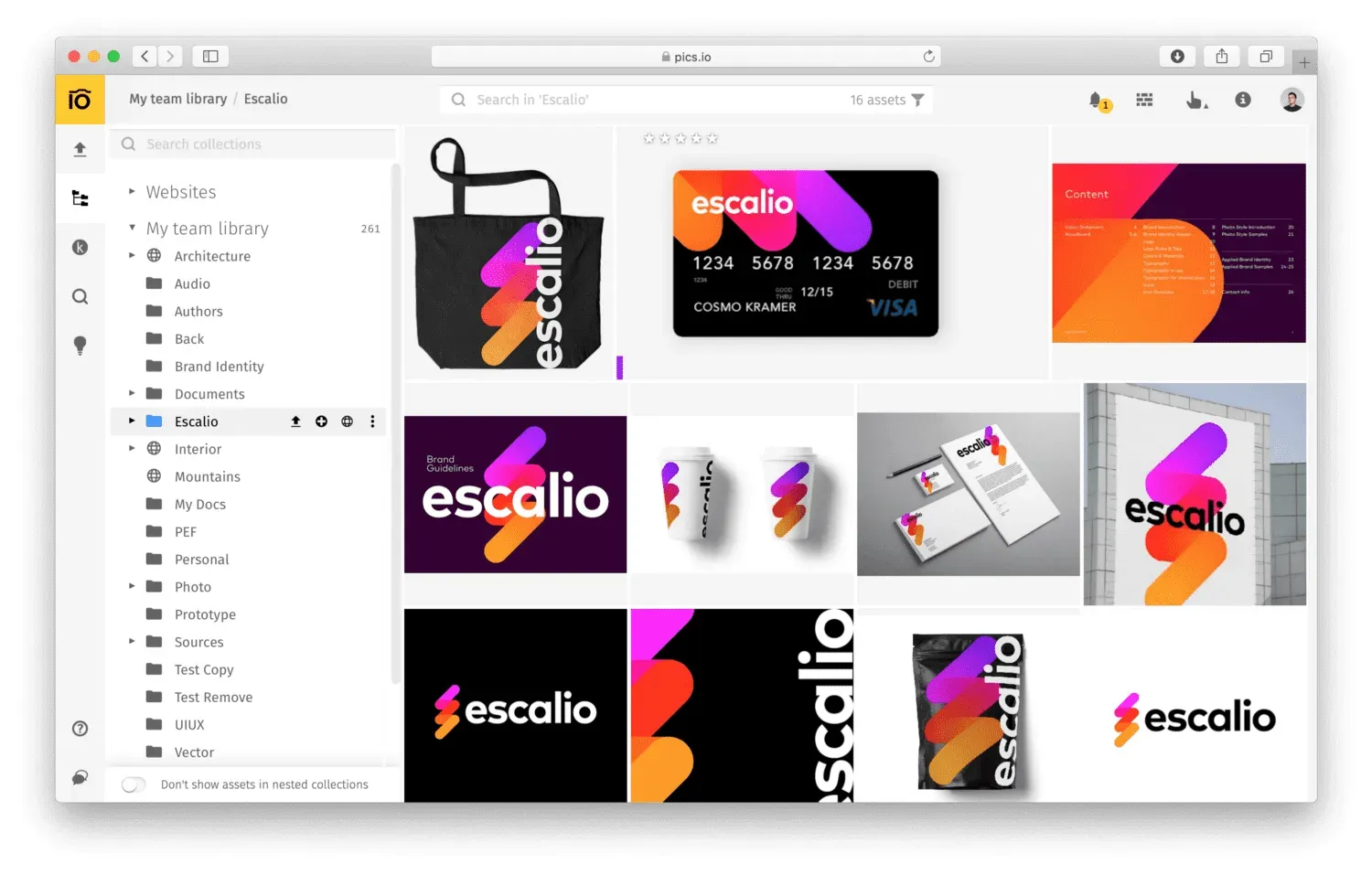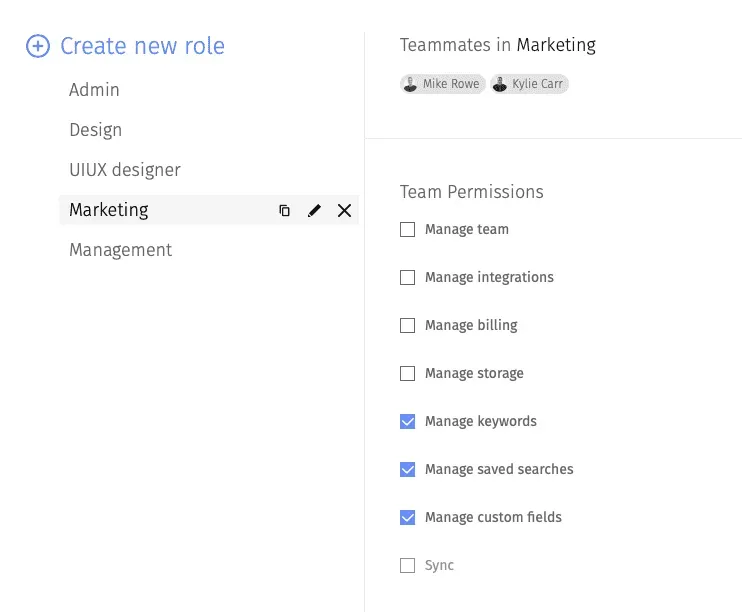In this article, you’ll learn:
Have you ever compared Digital Asset Management to other cloud storage services? If it happened you’ve possibly explored DAM vs OneDrive, Dropbox or other cloud storage alternatives. The other possibility is that you’re already using Microsoft 365, but it’s existing features don't satisfy all the requirements of your workflow and made you search for OneDrive alternatives.
This review will provide the extensive analysis of Microsoft cloud storage tool OneDive and Pics.io digital asset management tool. Having explored it to the end, you’ll learn the key features of both platforms and use cases for the best application of both tools. Our aim is not to contrast the two platforms, but to show the advantages of both and help you choose the solution best fit for your business workflow. If you have already invested in OneDrive and your company uses other Microsoft products, it might not be an easy decision to transfer to digital asset management, hence, this decision has to be evaluated from all sides.
Digital asset management vs OneDrive
Microsoft describes Microsoft 365 Backup as a productivity cloud across work and life. The platform delivers tools for collaboration, communication, device security, and IT management, and it integrates with plenty of other applications.
Digital Asset Management gives you a single place to store your valuable files and organize them in such a way that your coworkers don't need your help to find them. By adding metadata to the files, you make them assets – their value increases since they can be found, shared, and reused when you need them again.
An important differentiator is that a Digital Asset Management system like Pics.io is shared and open to the company’s employees from the get-go. While OneDrive is your cloud file storage where files are private, and you choose which ones to share if you want to share. Simultaneously, OneDrive is considered the most secure storage on the market. Only recently, the cloud storage provider has added one more security measure. So-called Personal Vault allows you to protect your data with identity verification, such as fingerprint or face. It’ll also lock your account if you’re inactive for 20 minutes. Very useful if you’re keeping sensitive info, right?
An important differentiator is that a Digital Asset Management system like Pics.io is shared and open to the company’s employees from the get-go. While OneDrive is your cloud file storage where files are private, and you choose which ones to share if you want to share. Simultaneously, OneDrive is considered the most secure storage on the market. Only recently, the cloud storage provider has added one more security measure. So-called Personal Vault allows you to protect your data with identity verification, such as fingerprint or face. It’ll also lock your account if you’re inactive for 20 minutes. Very useful if you’re keeping sensitive info, right?
Why do businesses choose OneDrive?
Privacy
Going toe-to-toe with security, privacy also matters when choosing cloud storage. No business owner wants their data to become public at some point. Microsoft promises “not to use what you say in email, chat, video calls or voicemail, or your documents, photos or other personal files to target ads to you.” So when saying that OneDrive cares most about your privacy, it’s more like choosing the lesser evil.
Integration with Microsoft
OneDrive fits the Microsoft ecosystem. And this goes beyond traditional MS Office but also includes Outlook, Skype, etc. For example, you can share all your files via Skype with no effort.
By sharing your documents with others, you can also work on them together with your team. You’ll see all the changes in real-time, and they’ll be automatically saved in your account.
Collaboration features
Collaboration is key within work and life, and Microsoft 365 and OneDrive enables you to work simultaneously on a file, such as a word document or a PowerPoint presentation together with many others. This allows for efficient and immediate access to the latest updated file in a project that you’re working on. Instead of sharing working documents in email attachments, you can share them via links or email invites. That way,everyone is sure that they’re working on the same file instead of sending revisions back and forth between many stakeholders.
Access rights
In OneDrive, you can easily see which files have been shared with you, and which files you have shared with others, making it easy to sort between what’s private and what’s not. You can set access rights, allowing users to preview or edit files, set expiration dates, and even password protect documents that you want to keep private between a certain group of people, or just yourself.
Files On-Demand
This is a great feature recently added by OneDrive. Files On-Demand allows you to access your files on your device offline, without the need to physically store them on your computer. Indeed, an ideal solution if you have a tablet or mobile device with limited storage space.
Restoring files
At first glance, this is not the most important feature to have. Still, how often do you delete a file by mistake and then go through your trash, praying that it didn’t disappear forever? I do it regularly :) With OneDrive, you can restore your files for 93 days since you removed them. I bet it’s long enough to understand whether you need those materials.
Why do businesses choose digital asset management like Pics.io?
Easy access to digital assets
The key benefit of DAM is the ability to easily find, access, retrieve and use all digital assets from one single point of entry. It ensures all files are indexed and structured appropriately with metadata so that they can later be searched for and retrieved easily. Even if you can’t remember the title of a certain file, you can search using a variety of parameters, such as tags, descriptions, categories, indexed document content and more.

Advanced collaboration features
Share assets with colleagues or external parties. Control if they should have download or just preview rights. Share assets and let your collaboration partner make annotations (comments) within the asset. For example, if you’re working on a creative project where visuals are an important part of it and you want feedback on a graphic file, such as logos or Social Media imagery.
High operation efficiency with process automation
With a DAM system, you can be more productive when being creative. In Pics.io, features like crop and download mean you can easily find assets and quickly download them in the size and file type you need. You can even create presets, making it even quicker to get the assets you require.
What's the difference between DAM and OneDrive?
Uploading files
Storing files in OneDrive is quick. With your subscription you have a certain amount of free storage that comes with your plan. The assets are stored in folder structures, by file names, date uploaded and modified, modified by, and file size.
In a DAM, uploading files is easy. Tag them with the correct metadata, for example, what the asset contains, which campaign or department it belongs to, and similar. Most companies decide on a set routine for adding metadata to their assets, making it even easier for employees to find them. The uploader can be configured to each organization’s need to make sure all assets are added correctly. In a DAM, you often have included storage in the plan of your choice.
Internal vs external files application
OneDrive is perfect for assets that are work-in-progress between people and by yourself, especially in case these assets require the highest level of security and privacy protection (financial documents, strategic presentation, etc.). Get easy access to the files and continue your work from another device, as long as you log in with your credentials.
A DAM system is perfect for assets that should be available to all or parts of the organization and/or externals. For example, marketing campaign material, company wide presentations, branding materials like logos and other visuals, images for press and much more.
Search capabilities
In OneDrive, you search for file names, look through a folder structure or search for the author/the one who shared the asset with you to find and retrieve files. Often, in one's private OneDrive, it’s easy to keep track of everything, because your file and folder structure is decided by you. When finding and retrieving files others have shared with you it can become more difficult as you only have file names or the name of the person that shared the file with you to lean on.
In a DAM, searching and finding assets are easy. For all assets you can search for the different tags the asset is associated with, for example time and date, the author of the asset, the department it belongs to. It’s only up to you and your organization. You can also use custom fields to create your own file organization structure most suitable for your purposes.
Permissions
In OneDrive, you can decide if the asset you have stored should be available to you or to someone else. You can share your asset with another colleague or many people, to a specific group and more. You can set expiry dates and password protect documents and you can withdraw access at any point. With OneDrive, you have full control over the assets you upload.
In a DAM, the concept is that it’s a shared asset as soon as it’s uploaded. However, you can still decide if the whole organization, different parts of the organization or just admins should have access, for example. When sharing assets internally and externally, you can also decide if they should be able to only preview or to download as well. Furthermore, you can set expiry dates on assets and withdraw sharing at any point.

File Formats
In OneDrive, you can store any filetype up to 100GB and preview almost any file type without downloading the specialty software needed. However, there are some restraints on file size to be able to preview file types.
In a DAM, and speaking for Pics.io, you can preview any file type without the specialty software needed.
Collaboration
OneDrive is made for easy collaboration between people. Work simultaneously on a document or presentation for example to ensure high productivity. When others are working on a document or presentation at the same time as you, it’s easy to see where and what the other person(s) have contributed with. Add comments and edit within the document all in one go.
In a DAM you can easily collaborate on assets. Add comments in the comment field on the asset. You can even add comments within the asset! For example, if you’re working on a graphic design for an upcoming campaign you can comment if you want objects to move a little to the right or left, change color etc.
Plugins
Since OneDrive is part of Microsoft 365’s productivity cloud, all applications within this platform work seamlessly together. Opening a Word Document from OneDrive or adding it into Teams is a breeze. Furthermore, you can find many third-party applications with already access to OneDrive as an application, making it easy to log-in and retrieve files.
In a DAM, plugins and integrations are crucial. Pics.io offers out-of-the-box plugins for Adobe Photoshop and InDesign. Furthermore, Pics.io offers an open API that enables you to create any integration you wish.
Final thoughts
DAM isn’t a way of replacing Microsoft 365 OneDrive as a storage application. We hope you see that these two applications have different purposes. If one of your departments understands that adding digital asset management to your business workflow can be beneficial for its productivity, Pics.io is here to help. You can transfer the data smoothly to Pics.io using our data migration tool or continue using OneDrive and make a new storage for some of your branding & marketing assets for collaboration with external partners. Not so long ago, Pics.io also released its own storage & became known as an all-in-one DAM solution. So now you don’t need to go into the trouble of setting up storage or configuring permissions. Sign up & use DAM immediately! Choosing your cloud storage is only half the battle. Get the fullest of your storage with Digital Asset Management. With Pics.io you can organize your assets, access & distribute them easily!



